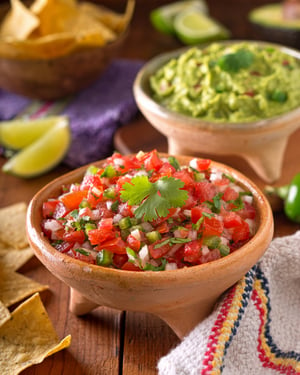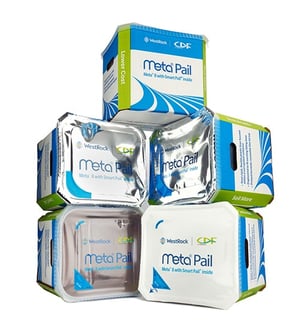Its Proliferation Continues to Grow
They provide convenience and delicious efficiency in our everyday lives, even if people don’t know what they are called. If you are a food producer or are in the food and beverage packaging industry, you’re undoubtedly familiar with them: standcap inverted pouches, a soft-sided, inverted wedge shape with a flat, flip-top dispensing closure that acts as its base. It rolls down like a toothpaste tube for maximum product evacuation, uses gravity as an assist, and minimizes the introduction of oxygen, slowing spoilage and extending shelf life.
As this Washington Post article says, the writer of the article generally speaks to a consumer audience, but the nuances hit home to us in  the B2B packaging sector. Here’s a recap of some of the points the author, Laura Reiley (who has a culinary background and is a food reporter), makes.
the B2B packaging sector. Here’s a recap of some of the points the author, Laura Reiley (who has a culinary background and is a food reporter), makes.
Reiley reminds us that we have a history of resistance to changes in food packaging. And, ironically, once it changes, we don’t even remember it being any other way. Yes, we can be fickle.
Sounding the Bell!
She sounds the bell that there is something heading our way. Something better. An innovation that is coming “fast and furious” and once it is here, we will “scarcely remember when it didn’t exist.” Enter, the standcap inverted pouch. All it took, it seems, is Daisy brand’s introductory product, sour cream, to lead the way. Chobani is introducing a product, Uncle Dougie’s organic BBQ sauces are now squeezable, and a guacamole product is soon to hit the shelves. Critical mass is just around the corner—nut butters, jams, salsas … well, you get it. Let’s hope you have room on your fridge door for the deluge!
What’s interesting about that is the turn this packaging innovation is making in the F&B industry. Simply by redesigning the packaging, foods that were once considered “ingredients” to dishes and recipes are now condiments. As “heavy rotation” items, they are now being housed in the most active area of the refrigerator: the door. More consumption, of course, translates into more revenue for the food producers. In fact, as Reiley points outs, “In the first year of its pouch, Daisy reported a 69.7 percent increase in sales (despite charging about 25 percent more per ounce than for the traditional tubs).” Change can be a very good thing!
Money—while a powerful motivator, and perhaps part a happy accident here—isn’t the only driver behind this pivot. Consumers are interested in benefits, such as minimizing mess, convenient dispensing, food safety/spoilage, and cutting down on food and environmental waste.
Memories …
As we read this article, we were reminded of why we made the shift to flexible packaging … well before this shift hit the consumer F&B market. It speaks to consumer and corporate concerns about the cost of transportation and storing a heavy product, food spoilage and shelf life, proper evacuation, and sustainability responsibilities.
The article states, “The race is on to replace heavy, bulky cans and jars with flexible packaging that can be stored flat for shipment before being filled.” We can’t agree more from the IBC sector! It’s why we’ve innovated with the Meta® Pail. We recently wrote about Amazon’s Frustration-Free Packaging program (and Reiley reiterates that Amazon plans to make half of its shipments carbon neutral by 2020), an initiative that was largely driven by consumers. After reading Reiley’s article, we’re proud to say that CDF saw the need to drive the shift in the B2B markets and introduced our innovative flexible packaging products because they are successful solutions for all the same reasons—and then some—as noted above.
What We All Want
The consumer at home, the corporate food and beverage manufacturer and distributor, and the end-use customer at the local restaurant or F&B producer all look for the same properties and benefits from their flexible packaging—among them are the needs for:
- Food safety
- Extended shelf life
- Ease of use and handling
- Dispensability
- Resealability
- Durability
- Mobility and transport convenience
- Decrease product residual and waste—full evacuation from packaging
- Positive sustainability profile for packaging
Meta Pail’s appeal and functionality extends far beyond simple bullet points, as this article expands upon. It ensures the absolute purity of your product with unique tamper-evident lidding film. The lid film provides an excellent oxygen barrier and is easily peeled and resealable for storage (lidding options are available). This reduces lid costs and contamination.
Click here to download the Meta Pail brochure!
Meta Pail is suitable for many F&B segments, including:
Solids and dry goods: croutons, diced fruit, frozen fruit, spices, pet food
Semi-Viscous: sauces, dressings, condiments (mayonnaise, pickles, relish), bakery goods (flavorings, fillings, frosting, toppings, puree, compote), and more
Liquids: dairy (yogurt, cheese, ice cream, sweetened condensed milk), dyes, pigments, and more
Meta Pail is also a fantastic solution for chemical, cosmetic, industrial (greases and lubes), and pharmaceutical and medical applications.
The sustainability profile of Meta Pail is impressive. Here are some of the stats:
- Knock-down, 8-sided corrugated container saves space and resources—from storage and handling to transportation costs
- 33% savings on transportation costs: 16,200 inserts per truck vs. typical 6,500 plastic pails incoming
- Improve storage: 48 filled units per pallet in same footprint on 40 x 48” pallet (typical 36 plastic pails); weighs approximately 60% less than a plastic pail
- Less disposal volume, easier to recycle: 4 collapsed Smart Pails fit into the space of 1 five-gallon plastic pail
- Reduced impact on climate change (CO2 emissions) by 52% over rigid pails
- 72% less solid waste than rigid pails
- 64% less energy usage than rigid pails
- Recyclable components: HDPE pail and corrugated container
- Ability to collapse or nest for minimized and efficient disposal/recycling—takes up less space is a truck, plant, or dumpster
Future Facing
Change is good. And necessary. Initiatives and innovations, however slight or massive, can make a sizable difference in shaping future needs and goals. If your company has not switched to flexible packaging yet, we’re happy to explore the options with you. We are well-versed in helping companies make the transition and will deliver a seamless turn-key installation and line integration. Contact us now to collaborate on a viable, convenient, and successful future.

